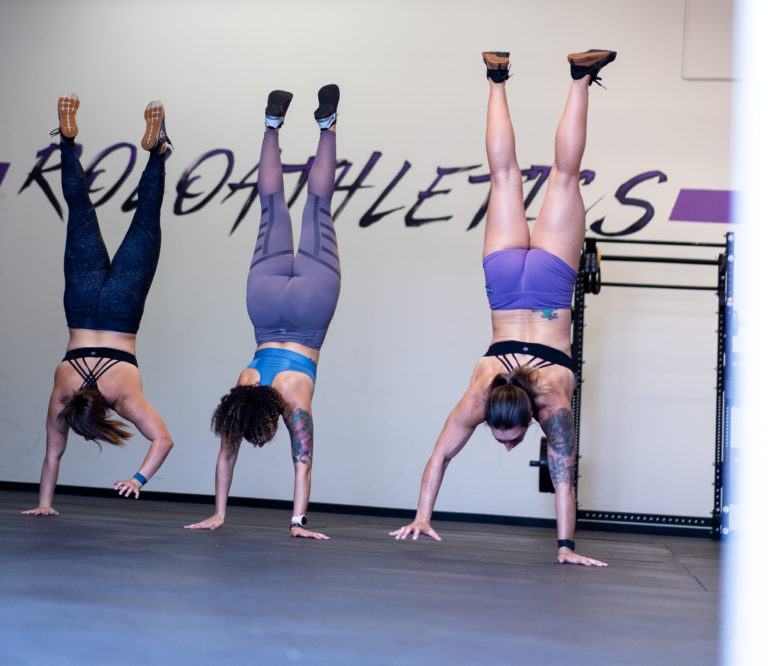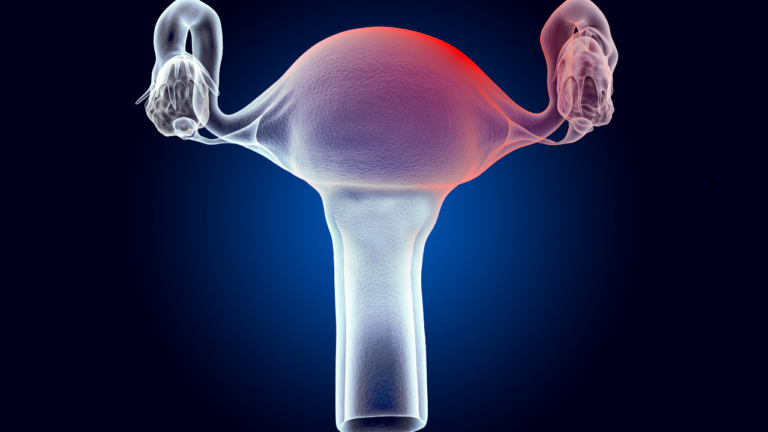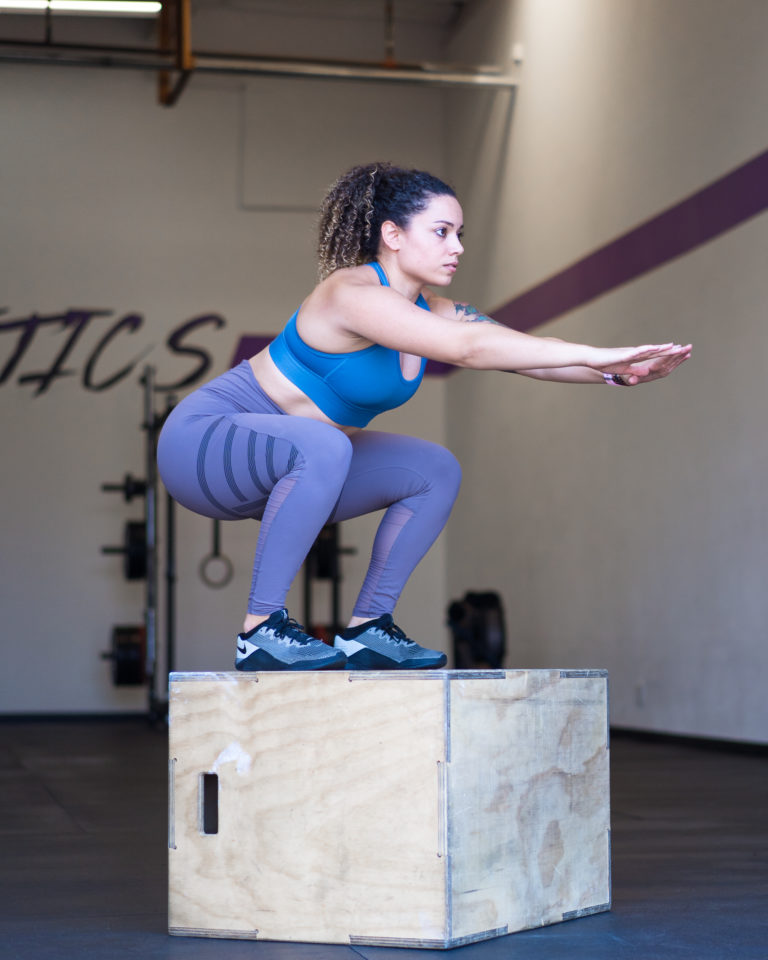PCOS and CrossFit

Polycystic Ovarian Syndrome (PCOS) is a condition where the ovaries produce an over abundance of androgens (male sex hormones). Symptoms can include:
- Male pattern baldness
- Weight gain (specifically around the abdominal region)
- Cysts developing in the ovaries (which can be present without having PCOS)
- Acne
- Infertility
- Excess body hair on the face, chest, and back
It is estimated that one in five women worldwide have PCOS.
Women diagnosed with PCOS are often insulin resistant. As a result doctors will suggest losing weight to treat their PCOS, and may recommend decreasing intense physical activity to manage cortisol and testosterone levels.
This is where the recommendation to stop CrossFit comes in to play. But is that something that has to happen if you’re a woman with PCOS?
Absolutely not, and here’s why:
First, studies show that resistance training can decrease testosterone levels in women with PCOS. Studies also show that resistance training increases estrogen levels, aiding in hormone balancing.
Second, exercise, specifically HIIT training WITH weight lifting, actually increases insulin sensitivity. And the more muscle mass a woman has, the more insulin sensitive she becomes!
Third, while we don’t want to focus on exercise to lose body fat, having more lean muscle mass increases resting metabolism.
This means your body requires more calories just to exist.. which means when you’re in between meals your body is more likely to use body fat as fuel. This helps your PCOS symptoms because excess body fat contributes to inflammatory markers (which can worsen PCOS symptoms like irregular periods).
Fourth, not all cortisol is bad cortisol.
In fact, without cortisol (a condition called Addison’s Disease) we would die. Rather than take away something that brings you pleasure, is overall exceptionally good for you and your body (CrossFit helps women with their balance, power production, bone health, confidence, and mental health), AND can have positive impact on your PCOS symptoms, doesn’t it make more sense to look at cortisol spiking things that AREN’T serving you… like poor sleep, a nutrient poor diet, work stress, etc?
At the end of the day you want to find a system of exercise that makes you feel good, you’re willing to do regularly, and it provides more positive than negative impacts on your health and your life.
You may even find there are seasons for you as a CrossFitter and time when you need to step away from the sport. But if you LOVE CrossFit and are a woman with PCOS, know that you CAN make this training modality work for you and your body!
References
Androstenedione. Androstenedione – an overview | ScienceDirect Topics. (n.d.). Retrieved July 10, 2022, from https://www.sciencedirect.com/topics/pharmacology-toxicology-and-pharmaceutical-science/androstenedione#:~:text=Androstenedione%20is%20converted%20to%20testosterone,oxidoreductase%20or%2017%2Dketosteroid%20reductase.
Barbieri, R. L. (m.d.). Steroid hormone metabolism in polycystic ovary syndrome. UpToDate. Retrieved July 10, 2022, from https://www.uptodate.com/contents/steroid-hormone-metabolism-in-polycystic-ovary-syndrome#:~:text=In%20PCOS%2C%20androstenedione%20and%20testosterone,and%20the%20adrenals%20%5B3%5D.
Hestiantoro, A., Kapnosa Hasani, R. D., Shadrina, A., Situmorang, H., Ilma, N., Muharam, R., Sumapraja, K., & Wiweko, B. (2018). Body fat percentage is a better marker than body mass index for determining inflammation status in polycystic ovary syndrome. International journal of reproductive biomedicine, 16(10), 623–628.
Liu, Y., Ye, W., Chen, Q., Zhang, Y., Kuo, C.-H., & Korivi, M. (2019). Resistance Exercise Intensity is Correlated with Attenuation of HbA1c and Insulin in Patients with Type 2 Diabetes: A Systematic Review and Meta-Analysis. International Journal of Environmental Research and Public Health, 16(1), 140. MDPI AG. Retrieved from http://dx.doi.org/10.3390/ijerph16010140
Polycystic ovary syndrome (PCOS). Johns Hopkins Medicine. (2022, February 28). Retrieved July 10, 2022, from https://www.hopkinsmedicine.org/health/conditions-and-diseases/polycystic-ovary-syndrome-pcos
Ramos, F. K. P., Lara, L. A. da S., Kogure, G. S., Silva, R. C., Ferriani, R. A., Sá, M. F. S. de, & Reis, R. M. dos. (2016, July 29). Quality of life in women with polycystic ovary syndrome after a program of resistance exercise training. Revista Brasileira de Ginecologia e Obstetrícia / RBGO Gynecology and Obstetrics. Retrieved July 10, 2022, from https://www.thieme-connect.com/products/ejournals/html/10.1055/s-0036-1585457
Razzak, Z. A., Khan, A. A., & Farooqui, S. I. (2019). Effect of aerobic and anaerobic exercise on estrogen level, fat mass, and muscle mass among postmenopausal osteoporotic females. International journal of health sciences, 13(4), 10–16.
Wiggs, A. G., Chandler, J. K., Aktas, A., Sumner, S. J., & Stewart, D. A. (1AD, January 1). The effects of diet and exercise on endogenous estrogens and subsequent breast cancer risk in postmenopausal women. Frontiers. Retrieved July 10, 2022, from https://www.frontiersin.org/articles/10.3389/fendo.2021.732255/full






